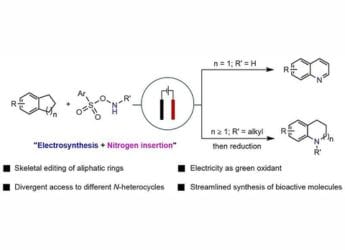- Home
- Science
- Science News
- NASA Test Payload Launches Into Space Onboard US Satellite for Improved Weather Forecasting
NASA Test Payload Launches Into Space Onboard US Satellite for Improved Weather Forecasting
NASA says the spacecraft will require greater atmospheric drag than can be created by traditional rigid heat shields.

Photo Credit: United Launch Alliance
The rocket carrying JPSS-2 was launched from Vandenberg Space Force Base, northwest of LA
A satellite intended to improve weather forecasting and an experimental inflatable heat shield to protect spacecraft entering atmospheres were launched into space from California on Thursday.
A United Launch Alliance Atlas V rocket carrying the Joint Polar Satellite System-2 satellite and the NASA test payload lifted off at 1:49am local time (3:19pm IST) from Vandenberg Space Force Base, northwest of Los Angeles.
Developed for the National Oceanic and Atmospheric Administration, JPSS-2 was placed into an orbit that circles the Earth from pole to pole, joining previously launched satellites in a system designed to improve weather forecasting and climate monitoring.
Mission officials say it represents the latest technology and will increase the precision of observations of the atmosphere, oceans and land.
After releasing the satellite, the rocket's upper stage was to reignite to position the test payload for re-entry into Earth's atmosphere and descent into the Pacific Ocean.
Called LOFTID, short for Low-Earth Orbit Flight Test of an Inflatable Decelerator, the device is an “aeroshell” that could be used to slow and protect heavy spacecraft descending into atmospheres, such as those of Mars or Venus, or payloads returning to Earth.
According to NASA, effectively slowing heavy spacecraft will require greater atmospheric drag than can be created by traditional rigid heat shields that fit within the shrouds that surround payloads aboard rockets.
The LOFTID aeroshell inflates to about 6 meters in diameter.
In the thin atmosphere of Mars, for example, having such a large aeroshell would begin slowing the vehicle at higher altitudes and reduce the intensity of heating, according to the space agency.
The aeroshell was expected to impact the ocean a few hundred miles east of Hawaii, where a vessel was waiting. NASA hoped to recover the aeroshell as well as a data recorder that was to be ejected before splashdown.
Get your daily dose of tech news, reviews, and insights, in under 80 characters on Gadgets 360 Turbo. Connect with fellow tech lovers on our Forum. Follow us on X, Facebook, WhatsApp, Threads and Google News for instant updates. Catch all the action on our YouTube channel.
Related Stories
- Samsung Galaxy Unpacked 2025
- ChatGPT
- Redmi Note 14 Pro+
- iPhone 16
- Apple Vision Pro
- Oneplus 12
- OnePlus Nord CE 3 Lite 5G
- iPhone 13
- Xiaomi 14 Pro
- Oppo Find N3
- Tecno Spark Go (2023)
- Realme V30
- Best Phones Under 25000
- Samsung Galaxy S24 Series
- Cryptocurrency
- iQoo 12
- Samsung Galaxy S24 Ultra
- Giottus
- Samsung Galaxy Z Flip 5
- Apple 'Scary Fast'
- Housefull 5
- GoPro Hero 12 Black Review
- Invincible Season 2
- JioGlass
- HD Ready TV
- Laptop Under 50000
- Smartwatch Under 10000
- Latest Mobile Phones
- Compare Phones
- OnePlus 15R
- Realme Narzo 90x 5G
- Realme Narzo 90 5G
- Vivo S50 Pro Mini
- Vivo S50
- OPPO Reno 15c
- Redmi Note 15 5G
- Redmi Note 15 Pro 5G
- Asus ProArt P16
- MacBook Pro 14-inch (M5, 2025)
- Infinix Xpad Edge
- OnePlus Pad Go 2
- OnePlus Watch Lite
- Just Corseca Skywatch Pro
- Acerpure Nitro Z Series 100-inch QLED TV
- Samsung 43 Inch LED Ultra HD (4K) Smart TV (UA43UE81AFULXL)
- Asus ROG Ally
- Nintendo Switch Lite
- Haier 1.6 Ton 5 Star Inverter Split AC (HSU19G-MZAID5BN-INV)
- Haier 1.6 Ton 5 Star Inverter Split AC (HSU19G-MZAIM5BN-INV)

















